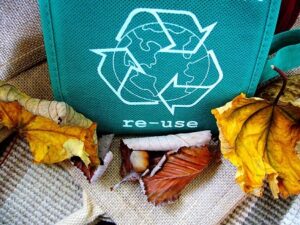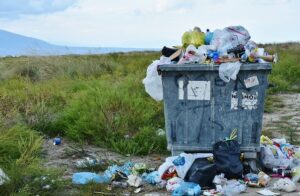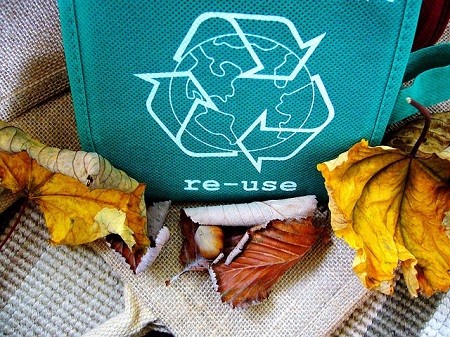
Are there any examples of positive Human-Environment Interaction? Most of what has been seen in the overview on Human-Environment Interaction saw many negative examples of interactions between the environment and humans.
But, are there any positive Human-Environment Interaction examples? There are!
Let’s explore them in-depth in this post.
What is Human Environment Interaction?
Human-Environment Interaction is the interaction between humans and their environment. Humans depend on their environment for survival and are forced to adapt. But, humans also modify their environment through their everyday actions.
Positive Human Environment Interaction
There are a lot of negative Human-Environment Interaction examples, such as pollution and deforestation.
But, is it possible for humans to have a positive human-environment interaction? Absolutely. There are many ways we will discuss below in which they can.
For a discussion of negative examples, visit Negative Human Environment Interaction Examples. (You can also find all examples of Human-Environment Interaction at Examples of Human-Environment Interaction.)
Positive Human Environment Interaction Examples
Here are some examples of positive effects of Human-Environment Interaction.
Recycling

Recycling can play a big part in helping to improve our environment. It’s estimated now that recycling only accounts for about 30% of all waste, so there is room for improvement.
Why do we need recycling? Well, the amount of waste we are producing has dramatically increased in modern times. The estimate is that the average person produces a whopping 7.5 pounds of garbage daily.
All of this garbage just goes to landfills where it is buried. Eventually, we will run out of room to put all this garbage, and landfill space will decrease.
By recycling, less of this waste goes into landfills. Also, fewer resources and energy are needed to produce new materials such as plastic and glass, since they are able to be reused when recycled. Plus, it reduces pollution which is created in the process of extracting these new materials.
Recycling can help to prevent waste from trash in the environment, as well as minimizing the need for more resources such as plastics.
Learn more about recycling.
Renewable Energy or Clean Energy Sources

Renewable or clean energy sources are things such as wind and solar power. These are energy sources that don’t create pollution and the negative environmental effects of using cheaper energy sources such as oil, gas, coal, and fossil fuels.
These gas energy sources create carbon emissions when they are used, and they are non-renewable. Meaning, that eventually they will run out at the rate we are using them.
But the good thing about clean energy sources such as solar is that they are renewable and sustainable for future generations.
A lot of homes are starting to switch to solar power which is beneficial for the environment. Here are some more examples of renewable energy sources:
- Hydroelectric power
- Solar power
- Wind
- Biomass energy
- Geothermal energy
By using renewable energy sources such as solar power and wind, we don’t need to use unrenewable and environmental damaging energy sources such as oil and fossil fuels.
Reducing Emissions and Pollution
Just by driving less, many places such as Mexico city saw drastic improvements in pollution levels. By driving less, carpooling, and choosing more energy-efficient vehicles, we can reduce emissions and pollution that affect the environment.
Building National Parks
Natural parks and nature help the environment in huge ways. They are protected spaces that allow trees and other vegetation to grow freely as well as protect the wildlife and animals in them.
These areas help to control the climate, provide a buffer against extreme weather, are a resource for pharmaceuticals, and help with food supplies and clean water.
National parks also give people green space which has been shown to help psychologically and with stress. This is very important in today’s modern society where stress is increasing.
Preserving areas of nature is a great practice for the environment. Unfortunately, this is not practiced as much in underdeveloped countries for the time being.
Building Green Spaces
Some cities work to build new green spaces which are areas of trees or nature for residents to enjoy.
This is similar to building National Parks but on a lower scale. Green spaces can also provide trees and other vegetation which can help to control pollution. These green spaces also provide areas of relaxation for people.
Water Management and Reuse
Managing water usage can play a part in helping to conserve water sources. Also, the use of rainwater harvesters can help by allowing people to use rainwater directly. This helps to stop the depletion of water tables.
Planting Trees
Trees help to remove carbon dioxide and pollution from the air and provide habitats and homes for birds and other animals.
Eating Plant-Based
By eating more plant-based foods we can further help the environment. Raising cattle tends to create stress on the environment and is not as sustainable a practice as growing crops for food.
What are the 3 Ways Humans Interact with the Environment
1. Depend on the Environment
Humans depend on the environment for survival. This includes things such as food.
2. Humans Adapt to the Environment
Humans adapt to the environmental conditions they are in.
3. Humans Modify and Change the Environment
Humans will modify the environment in order to survive or to get what they might desire. Typically, these have ended up being negative impacts on the environment.
You can find a deeper level of exploring these topics at 3 Ways Humans Interact with the Environment.
Related Resources
Final Thoughts
We’ve learned that although there are many negative Human Environment Interaction examples in today’s modern world, there still are some positive examples. These positive examples of Human Environment Interaction include recycling, renewable energy and clean energy sources, water reuse and management, building of National parks and greenspaces, planting of trees and eating more plant-based foods.
Lance has been passionate about the plant-based diet and we have been following a whole food plant-based diet for over 5 years. We focus on health, natural healing, weight management, animal rights, and the health of the planet and environment by focusing on whole plant-based foods and sustainable practices.
Learn more at the About Me page and follow on social media at the links below.







